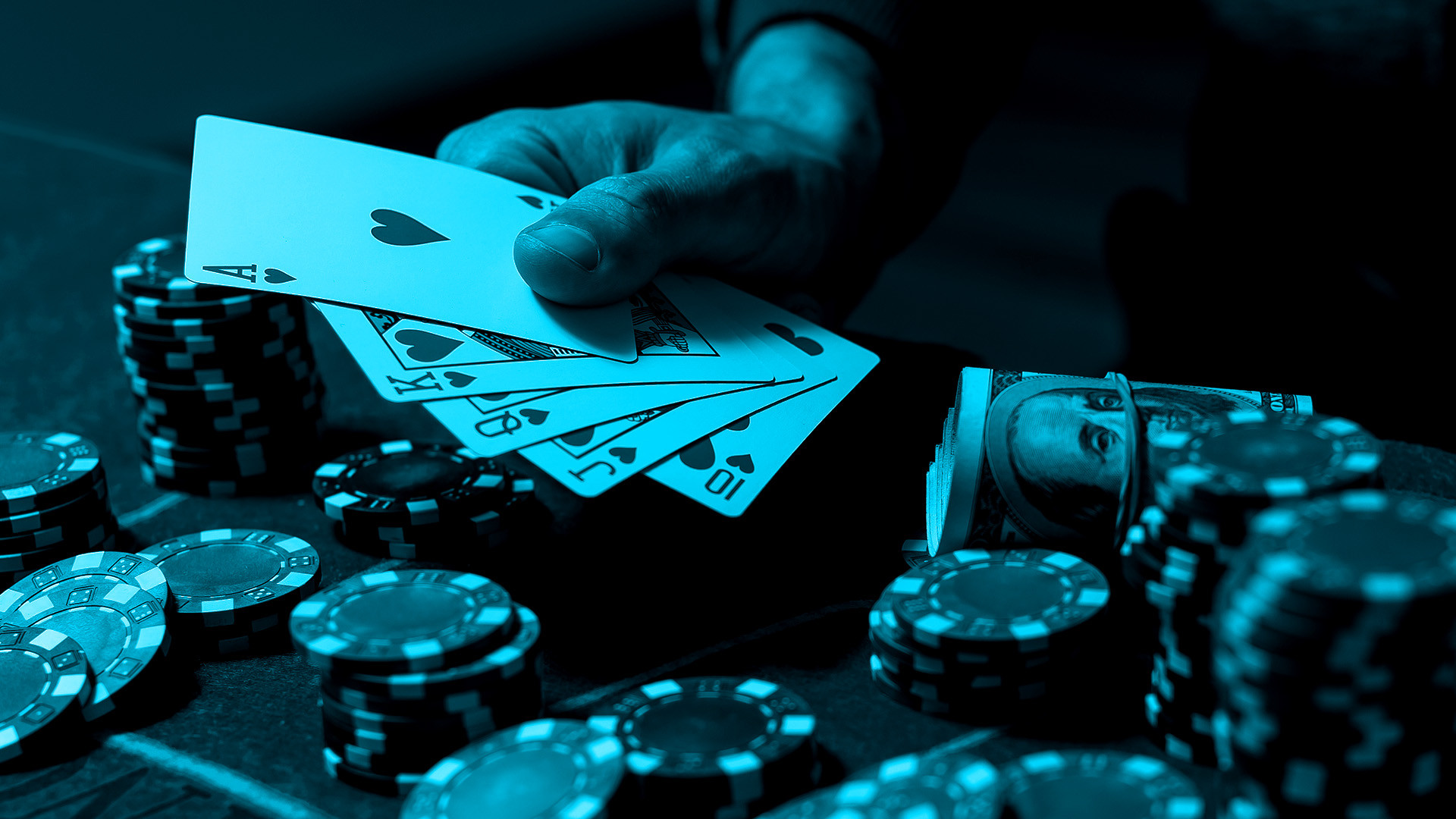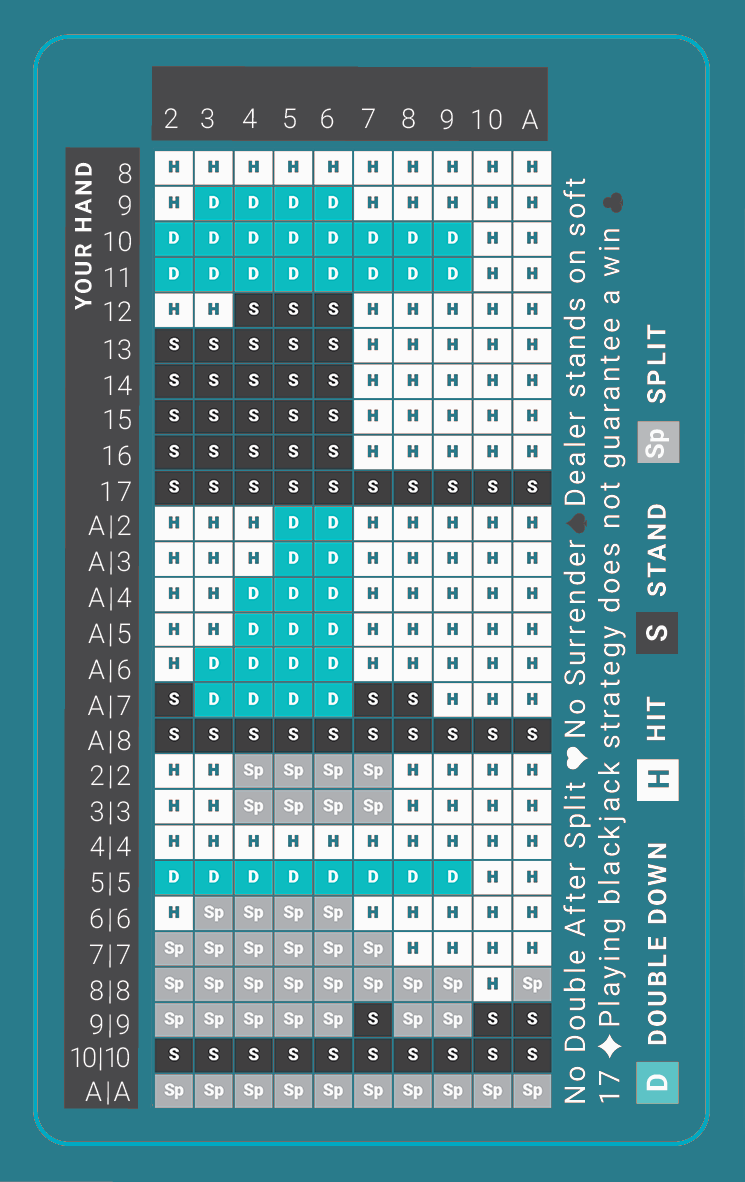
Blackjack Strategy Chart to Improve Your Blackjack Game
There is no perfect blackjack strategy, but you can use it to reduce the house edge and improve decision-making in certain scenarios.
In this comprehensive guide, we’ll cover the best blackjack strategy and how to use a blackjack chart to improve your game.
What is basic blackjack strategy?
Basic blackjack strategy, which is a proven method for playing blackjack, effectively aims to reduce the house edge, increasing a player’s chances of winning.
This strategy outlines the optimal decision for every possible hand combination you can have against any dealer’s face-up card, which is illustrated on a strategy chart to make it simple to use during a game.
Basic Strategy Chart
A blackjack strategy chart outlines every move you are best making depending on the two cards you are dealt and the dealer's face-up card.
The idea of the chart is to simplify decision-making during play by showing the best strategy for every possible hand combination.

How to Use The Strategy Chart
One axis displays the total value of your hand, while the other shows the dealer’s upcard.
The intersection of the two will tell you whether to hit, stand, split or double down.
Here’s a summary of the abbreviations you will find on the chart:
- D = Double Down: This means that you should double your original bet because you’re in a strong position to win the hand.
- H = Hit: You should request another card to improve your hand.
- S = Stand: Your current hand is considered strong enough, and you should not take any more cards.
- Sp = Split: Split your pair into two separate hands and place an additional bet.
Using this chart, especially if you’re new to blackjack, will help you build good habits and ensure that you’re following the optimal strategy. We’d advise players to print out or download a chart while playing to help perfect their approach.
How effective is the blackjack strategy?
Basic blackjack strategy is effective in reducing the house edge and improving a player’s overall chances of success. However, it’s very important to set realistic expectations when playing blackjack. While this strategy can increase your chances of winning in any given hand, there is no perfect blackjack strategy that guarantees winning.
In a standard game of blackjack, the house edge is typically around 2-5% for players who don’t implement any strategy into their gameplay. However, using a basic blackjack strategy can lower this edge to as little as 0.5%, which gives you a much-improved advantage.
This significant reduction in house advantage means that over time, players using basic strategy will lose less than someone relying on instinct and potentially walk away with winnings.
However, statistical analysis supports this. If players consistently follow this basic strategy discussed, you’ll win around 42-44% of the time in the long run. While this is far from a guarantee of consistent success, it’s an improvement over playing without a plan, making blackjack one of the most player-friendly games.
Plays to avoid in blackjack
It’s important to note that certain plays in blackjack games will statistically put you at a disadvantage.
Here are some plays that you must avoid while playing:
- Insurance bets: One of the most tempting yet disadvantageous plays are insurance bets when the dealer’s upcard is an ace. Insurance allows you to place a side bet that the dealer has blackjack. However, the odds of this happening are low and you are more likely to lose money in the long run. The house edge on insurance is around 6-7%.
- Splitting 10s: You should never split a pair of 10s (or face cards). A total of 20 is one of the best hands you can have, and splitting this into two weaker hands significantly reduces your chances of winning.
- Standing on low soft totals: If you have a soft hand (where an ace can be counted as 1 or 11), such as A6 or A7, many players are tempted to stand. However, you should hit or double down in most cases, as soft hands have less risk of busting, and you want to maximise your chances of getting a better total.
- Hitting on 12 when the dealer shows 4, 5 or 6: This is another common mistake that’s often made by inexperienced players. If you hit on 12 when the dealer has a weak upcard (such as 4, 5 or 6), you’re risking busting when the dealer is more likely to go bust themselves. In these cases, standing is the better choice, however tempting it is to try to hit 21.
Tips to apply when using blackjack strategy
While mastering basic blackjack strategy is a powerful tool, there are a few extra tips that can further improve your gameplay and help you get the most out of the strategy. These are:
- Pay attention to the dealer’s upcard: This is easily one of the most critical factors in deciding your next move while playing blackjack. If the dealer shows a weak card (2-6), then this is your opportunity to be more aggressive with standing or doubling down as the dealer has a higher chance of busting. If the dealer has a strong card (7-ace), then you should be more conservative and consider hitting or playing defensively. Don’t be afraid to change your approach. It’s stronger to be dynamic when playing blackjack.
- Understand hard and soft hands: A hard hand has no flexibility as there’s no ace, or the ace must be counted as 1 to avoid busting (e.g., 10-7 = 17). A soft hand, such as A6, is more flexible because you can count the ace as 1 or 11. Knowing how to use these hands is key to making the right/better decisions. With a soft hand, you can afford to be more aggressive with hits or doubles as you’re less likely to bust your hand.
- Manage your bankroll: Even when using basic strategy, blackjack losing streaks are going to happen at some point. Managing your bankroll, setting limits and adjusting your bets sensibly will help you stay in the game longer without risking more than you can afford to lose. Set a limit and know what you are willing to lose before you start playing.
- Don’t chase losses: A common mistake that players make is increasing their bet sizes after losing to try to recover. Stick to your betting limits and the strategy without letting emotions influence your decisions, regardless of how the game is playing out.
That concludes our basic blackjack strategy guide. You can also explore blackjack betting systems such as the 1-3-2-6 system, in addition to basic blackjack strategy, offering a structured way to place your bets for each round.
Although this strategy has proven to be effective, it doesn’t mean that you will win with every hand. Make sure that you set limits and stay in control during the inevitable losing streaks. However, if you continue to implement this strategy, you are far more likely to be playing for longer rather than relying on guesswork.